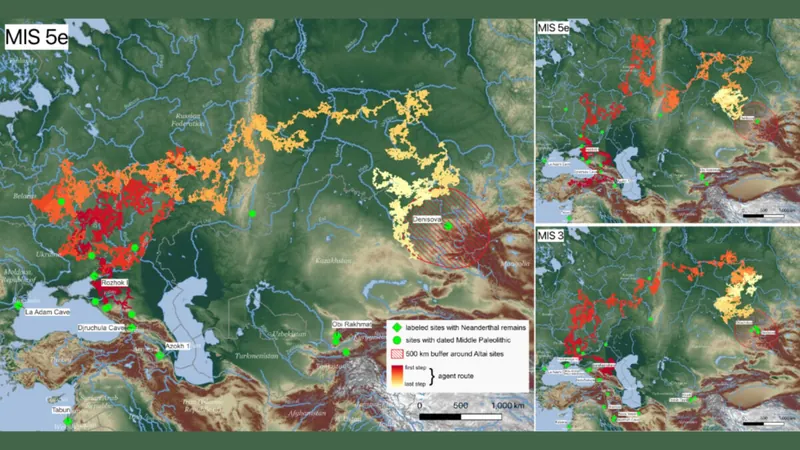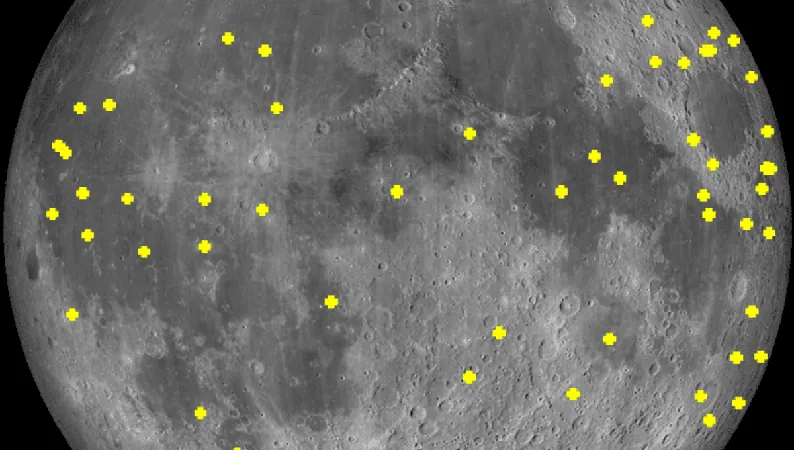
How Neanderthals Conquered Asia in Just 2,000 Years: The Surprising Journey Revealed!
2025-06-14
Author: Ling
The Ancient Journey Begins
Around 500,000 years ago, Neanderthals took their first steps away from a common ancestor with modern humans. Unlike their modern counterparts who arrived in Asia much later, these prehistoric relatives ventured out from Africa, charting a course toward Europe and Asia, reaching as far as Spain and Siberia.
Migrating Eastward: A Timeline of Neanderthal Expansion
Neanderthals first set foot in Asia between 190,000 to 130,000 years ago, with significant migrations into Central and Eastern Eurasia occurring roughly between 120,000 and 60,000 years ago. But the true mystery lies in how they managed this vast journey across challenging terrain.
The Power of Computer Simulations
Due to the lack of archaeological evidence detailing their routes, a team of anthropologists turned to advanced computer modeling to uncover possible paths of Neanderthal migration. These simulations suggest that by taking advantage of warmer periods and following river valleys, Neanderthals could cover approximately 2,000 miles in less than 2,000 years.
New Insights from Old Trails
Emily Coco, a key researcher in the study published in PLOS One, emphasized that despite facing natural barriers like mountains and rivers, Neanderthals could traverse northern Eurasia remarkably swiftly. "These findings shed light on ancient human migrations that archaeological records fail to capture," she explained.
Mapping the Migration: Conditions and Discoveries
The researchers factored in climate, land elevation, ancient waterways, and glaciers to map potential migration routes during two warmer climate periods: around 125,000 years ago and again 60,000 years ago. Their calculations revealed a consistent northern passage through the Ural Mountains and down into southern Siberia, aligning with known Neanderthal sites and regions inhabited by Denisovans.
A Rapid Migration Unveiled
Co-author Radu Iovita pointed out that Neanderthals could swiftly migrate thousands of kilometers from the Caucasus to Siberia by following waterways, a theory supported by genetic data. However, substantial archaeological evidence had been lacking—until now. The computer models indicate that these migrations were nearly inevitable during warm climatic periods, changing our understanding of how Neanderthals navigated their world.
Conclusion: Unraveling Ancient Mysteries
This groundbreaking research not only reveals the speed and adaptability of Neanderthals but also highlights the innovative use of technology in archaeology. By harnessing computer simulations, scientists are unlocking secrets of the past that could reshape our understanding of early human history.


 Brasil (PT)
Brasil (PT)
 Canada (EN)
Canada (EN)
 Chile (ES)
Chile (ES)
 Česko (CS)
Česko (CS)
 대한민국 (KO)
대한민국 (KO)
 España (ES)
España (ES)
 France (FR)
France (FR)
 Hong Kong (EN)
Hong Kong (EN)
 Italia (IT)
Italia (IT)
 日本 (JA)
日本 (JA)
 Magyarország (HU)
Magyarország (HU)
 Norge (NO)
Norge (NO)
 Polska (PL)
Polska (PL)
 Schweiz (DE)
Schweiz (DE)
 Singapore (EN)
Singapore (EN)
 Sverige (SV)
Sverige (SV)
 Suomi (FI)
Suomi (FI)
 Türkiye (TR)
Türkiye (TR)
 الإمارات العربية المتحدة (AR)
الإمارات العربية المتحدة (AR)